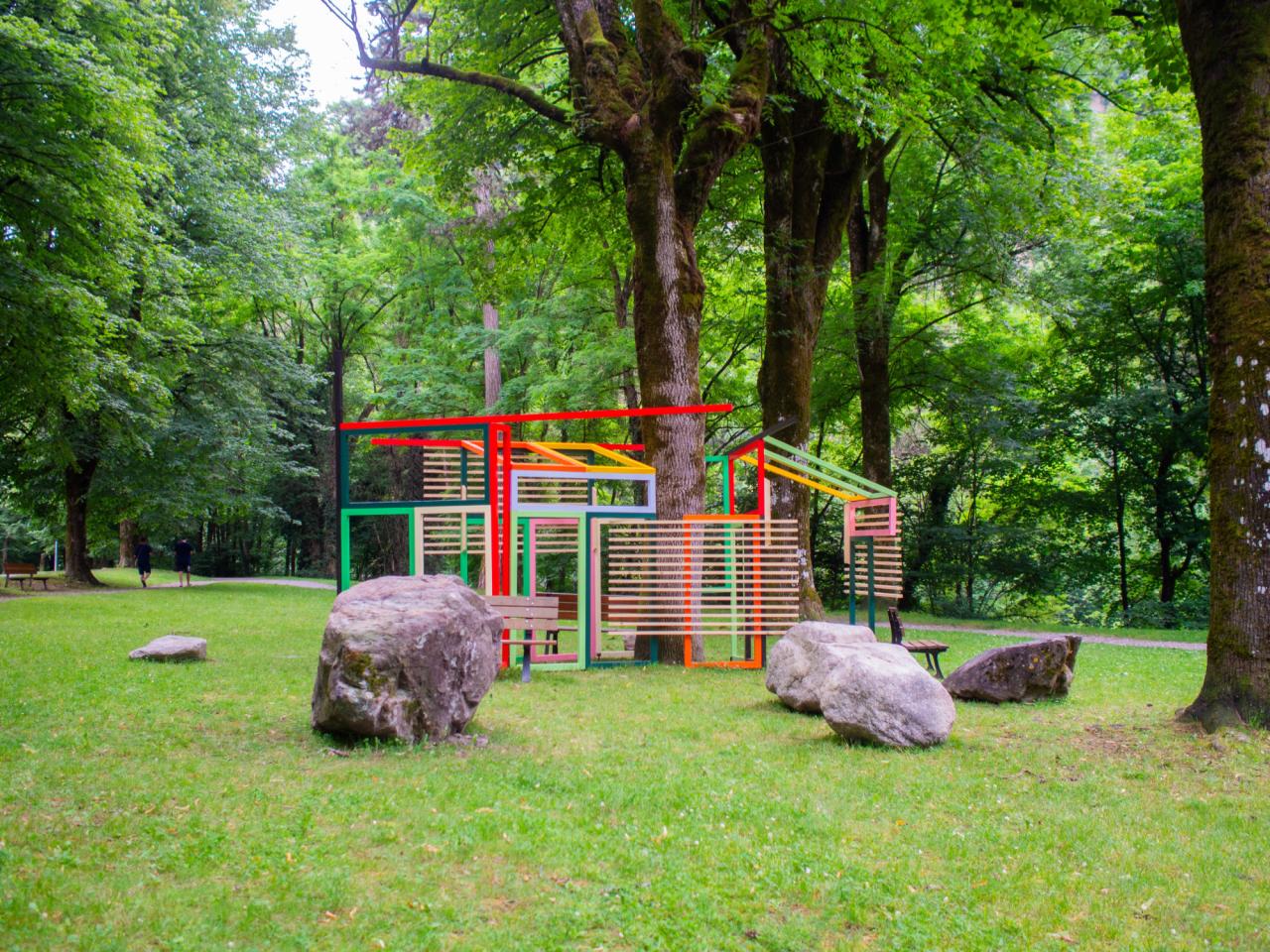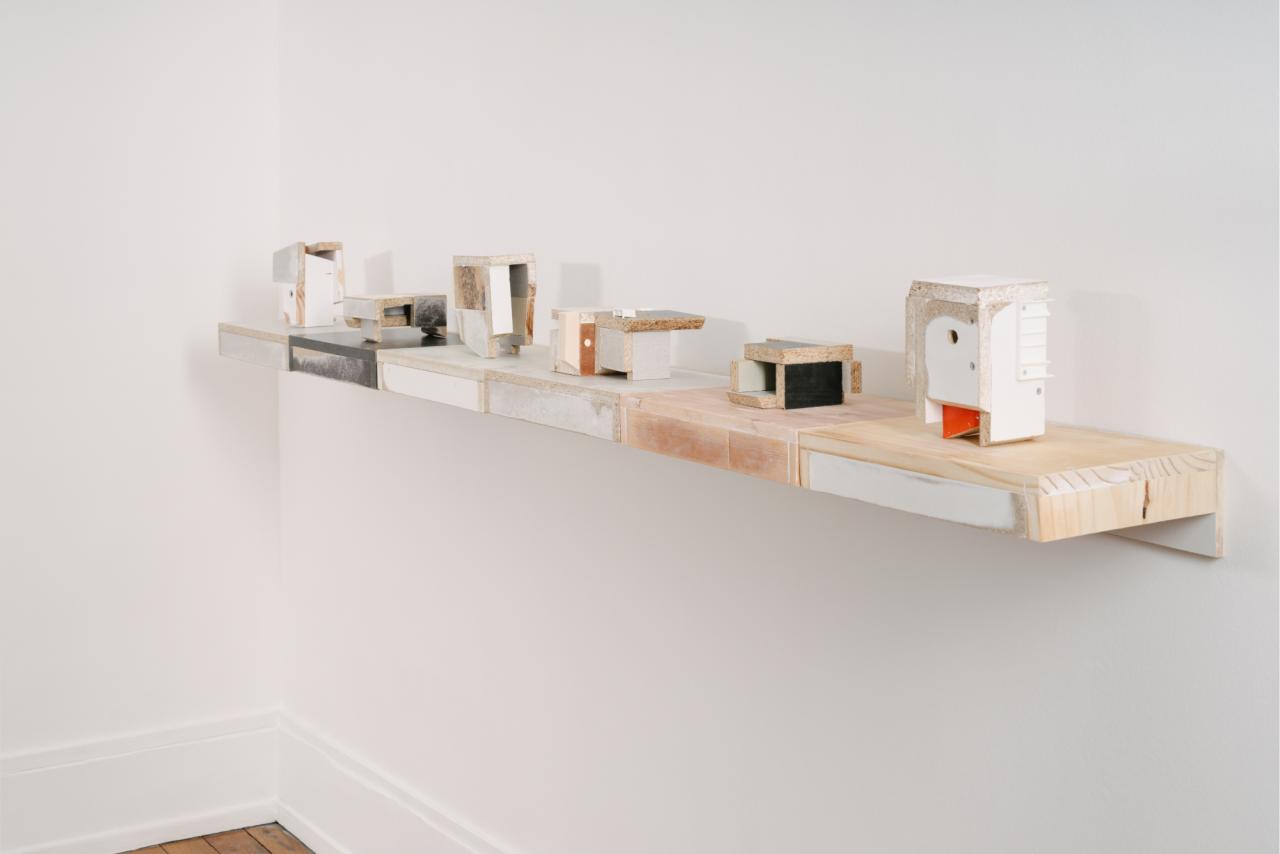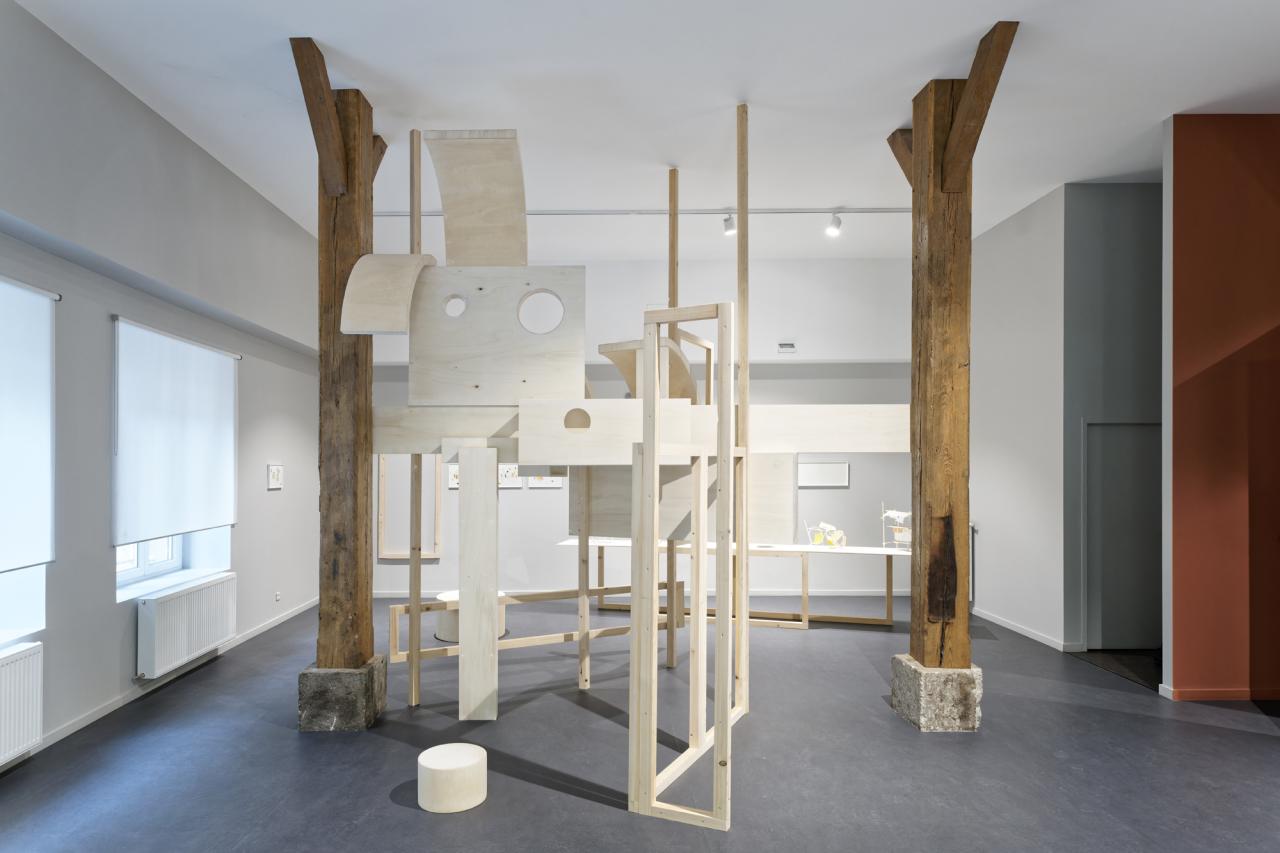Mengzhi Zheng
Born in 1983
Lives and works in Paris and Lyon

Exhibition Plein Air, parcours d’art à ciel ouvert, Parc thermal du Fayet, Saint-Gervais-les-Bains

Exhibition paris, Galerie Idéale, Paris

Exhibition enf(r)ance, Nouvel Institut Franco-Chinois, Lyon

In collaboration with the William Wilmotte - WW Architecture firm, Anne-Laure Giroud landscaper, Art Entreprise
Hanging garden, Lyon Parc Auto, Les Halles Bocuse, Lyon
“Mengzhi Zheng’s work lies at the intersection of painting, sculpture and architecture. It constantly oscillates between two and three-dimensionality, shifting imperceptibly from drawing to sculpture. His sculptures are drawings in space. Much like drawing – and because the white page is infinite – they have no specific scale.
His work draws part of its inspiration from the artist’s observation of cities and their heterogeneous constructions, of their vernacular aspects and disrepair. […] Another reference point can be found in the history of modern abstraction, which he revisits with a more contemporary outlook and thought process.
While his pieces may be interpreted as new avatars of constructivist sculpture (let us not forget that De Stijl advocated for the resolution of painting through the construction of the city), his collages and lithographs all but confirm this claimed heritage. However, one also quickly realises by looking at them that they are indeed contemporary works and the product of a modern-day vision of the current world. Far from the peremptory dogma and statements of the early 20th century, this approach is more akin to a teetering questioning of a world devoid of certitude – a sort of eulogy of fragility.
The small structures that M. Zheng builds are characterised by their boundless inventiveness, their spontaneous aspect and the subtlety of their outlines. In order to execute them as quickly as sketches, he keeps all the materials needed to create the compositions at hand, on his worktable, and works with hotmelt adhesive to achieve instant setting. The pieces do not undergo any corrections. Each of them is therefore the result of improvisation and makes way for the next. […]
This series, which he has developed over the years, bears the manifestly generic name of “Maquettes abandonnées” (Abandoned models). These colourful architectures are as many lightweight pictorial propositions composed in space. Their absence of scale makes them seem like as many mental edifices. In this sense, they are able to reconcile construction and immateriality, erection and hesitation, what is built and what is imponderable. […]
While perfectly constructed, they share the same qualities as traditional Chinese painting, which, because it eludes the Western rules of perspective, enables the eye to access it from multiple points. The materials that M. Zheng uses for his imponderable constructions are salvaged elements, pieces of crates, cardboard offcuts, scraps of paper. Insignificant residues. This is indeed where our modernity lies – between utopia and precarious construction, between invention and reappropriation.
A world that fluctuates between sky and sea, between hut and skiff, between utopia and realism, between the grace of the artistic gesture and the emergency shelter. One could perhaps see in it an attempt to imagine an uncertain future in a constant state of reformulation.” […]
Excerpt from Frêles esquifs, Hubert Besacier, 2018
Translated by Lucy Pons, 2020
© Adagp, Paris